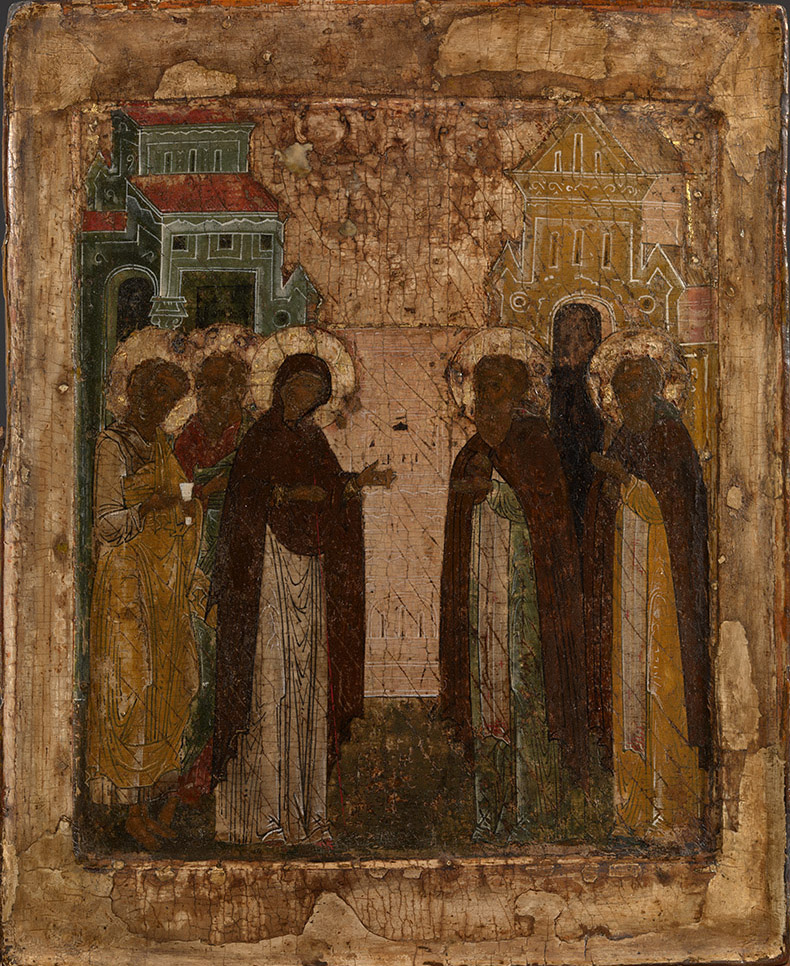MacDougall Auctions 2-3 December 2009
2 December 2009

91. THE APPEARANCE OF THE MOTHER OF GOD TO ST SERGIUS OF RADONEZH
MOSCOW, FIRST THIRD OF THE 16TH CENTURY
29.8 by 24 cm.
35,000-50,000 pounds
The depiction of the appearance of the Mother of God, accompanied by Apostles Peter and John, to the Venerable Sergius of Radonezh, the founder of the Holy Trinity Monastery (Troitse-Sergieva Lavra), is based on the first vita of the saint, compiled by Epiphanius the Wise circa 1400. The “nocturnal visit” of the Mother of God took place shortly before St Sergius’ death and signified the celestial blessing and patronage of the Holy Trinity monastery. The text of the vita names the cellarer Mikhei as the eyewitness to the miracle. A special service to commemorate this event was established in the monastery, which later inspired the development of a special type of icon composition. This iconography evolved in the Trinity Monastery very early, presumably immediately after the uncovering of the relics of St Sergius (1422); however, as no early icons of such type survived, this present image is one of the oldest ones (if not the oldest), which makes it particularly important.
The composition is similar to an early 16th century carved wooden icon from the State Russian Museum, depicting St Sergius and his successor Abbot Nikon in identical poses, gesturing towards the Virgin. Despite significant abrasions of the upper layer of paint, the icon demonstrates rare artistic quality and characterises its painter as an outstanding calligrapher. His drawing, both swift and precise, is seen in the cascades of the folds, and the soft, delicate style of painting leaves no doubt as to metropolitan origin of the artist. This icon is therefore of museum quality.
Notes on symbols:
* Indicates 5% Import Duty Charge applies.
Ω Indicates 20% Import Duty Charge applies.
§ Indicates Artist's Resale Right applies.
† Indicates Standard VAT scheme applies, and the rate of 20% VAT will be charged on both hammer price and premium.